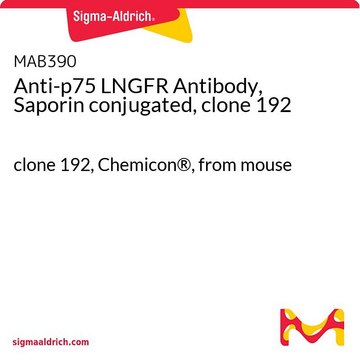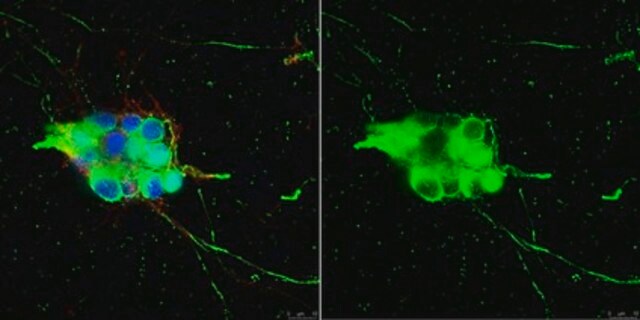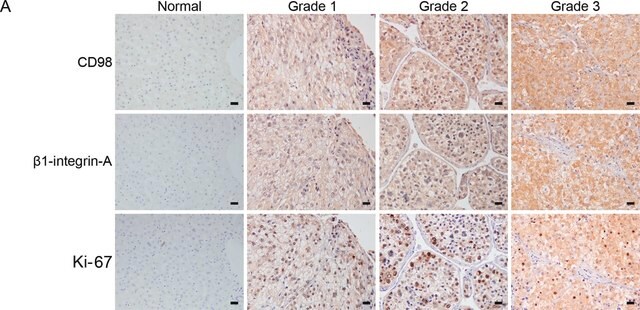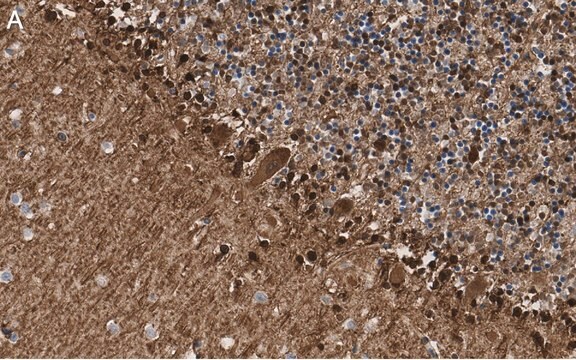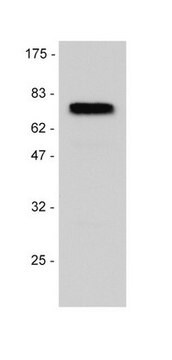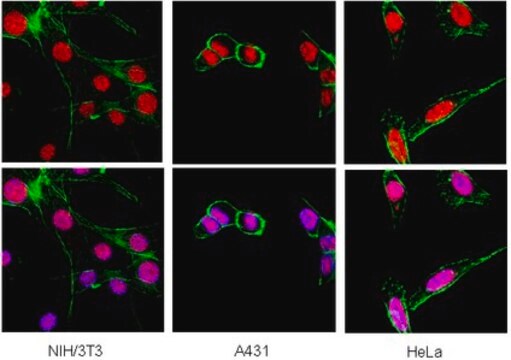MAB365
Anti-Nerve Growth Factor Receptor Antibody, extracellular, clone 192-IgG
clone 192-IgG, Chemicon®, from mouse
Synonim(y):
CD271 antigen, Low affinity neurotrophin receptor p75NTR, Low-affinity nerve growth factor receptor, NGF receptor, low affinity nerve growth factor receptor, nerve growth factor receptor, nerve growth factor receptor (TNFR superfamily, member 16), p75 IC
About This Item
Polecane produkty
pochodzenie biologiczne
mouse
Poziom jakości
forma przeciwciała
purified antibody
rodzaj przeciwciała
primary antibodies
klon
192-IgG, monoclonal
reaktywność gatunkowa
rat
producent / nazwa handlowa
Chemicon®
metody
immunocytochemistry: suitable
immunohistochemistry: suitable
immunoprecipitation (IP): suitable
western blot: suitable
izotyp
IgG1
numer dostępu NCBI
numer dostępu UniProt
Warunki transportu
wet ice
docelowa modyfikacja potranslacyjna
unmodified
informacje o genach
human ... NGFR(4804)
Opis ogólny
Specyficzność
Immunogen
Zastosowanie
Neuroscience
Neurochemistry & Neurotrophins
1-5 µg/mL (Non-reducing conditions only) was used on a previous lot.
Inhitibition Assay:
Inhibition on NGF binding {Chandler, 1984}.
Immunoprecipitation:
5 µg/mL, 0.5% triton X-100 buffer; PC12 positive control was used on a previous lot.
Immunohistochemistry:
1-5 µg/mL on rat spinal chord, of a previous lot was used. Other fixatives and methods can also be used.
Jakość
1-5 µg/mL on rat , of a previous lot, (spinal chord, see protocol below); other fixatives and methods can also be used.
Opis wartości docelowych
Powiązanie
Postać fizyczna
Przechowywanie i stabilność
Komentarz do analizy
Western Blot: NGF-differentiated PC12 cell lysate.
Immunohistochemistry: Rat brain tissue.
Inne uwagi
Informacje prawne
Oświadczenie o zrzeczeniu się odpowiedzialności
Nie możesz znaleźć właściwego produktu?
Wypróbuj nasz Narzędzie selektora produktów.
Kod klasy składowania
10 - Combustible liquids
Klasa zagrożenia wodnego (WGK)
WGK 2
Certyfikaty analizy (CoA)
Poszukaj Certyfikaty analizy (CoA), wpisując numer partii/serii produktów. Numery serii i partii można znaleźć na etykiecie produktu po słowach „seria” lub „partia”.
Masz już ten produkt?
Dokumenty związane z niedawno zakupionymi produktami zostały zamieszczone w Bibliotece dokumentów.
Nasz zespół naukowców ma doświadczenie we wszystkich obszarach badań, w tym w naukach przyrodniczych, materiałoznawstwie, syntezie chemicznej, chromatografii, analityce i wielu innych dziedzinach.
Skontaktuj się z zespołem ds. pomocy technicznej